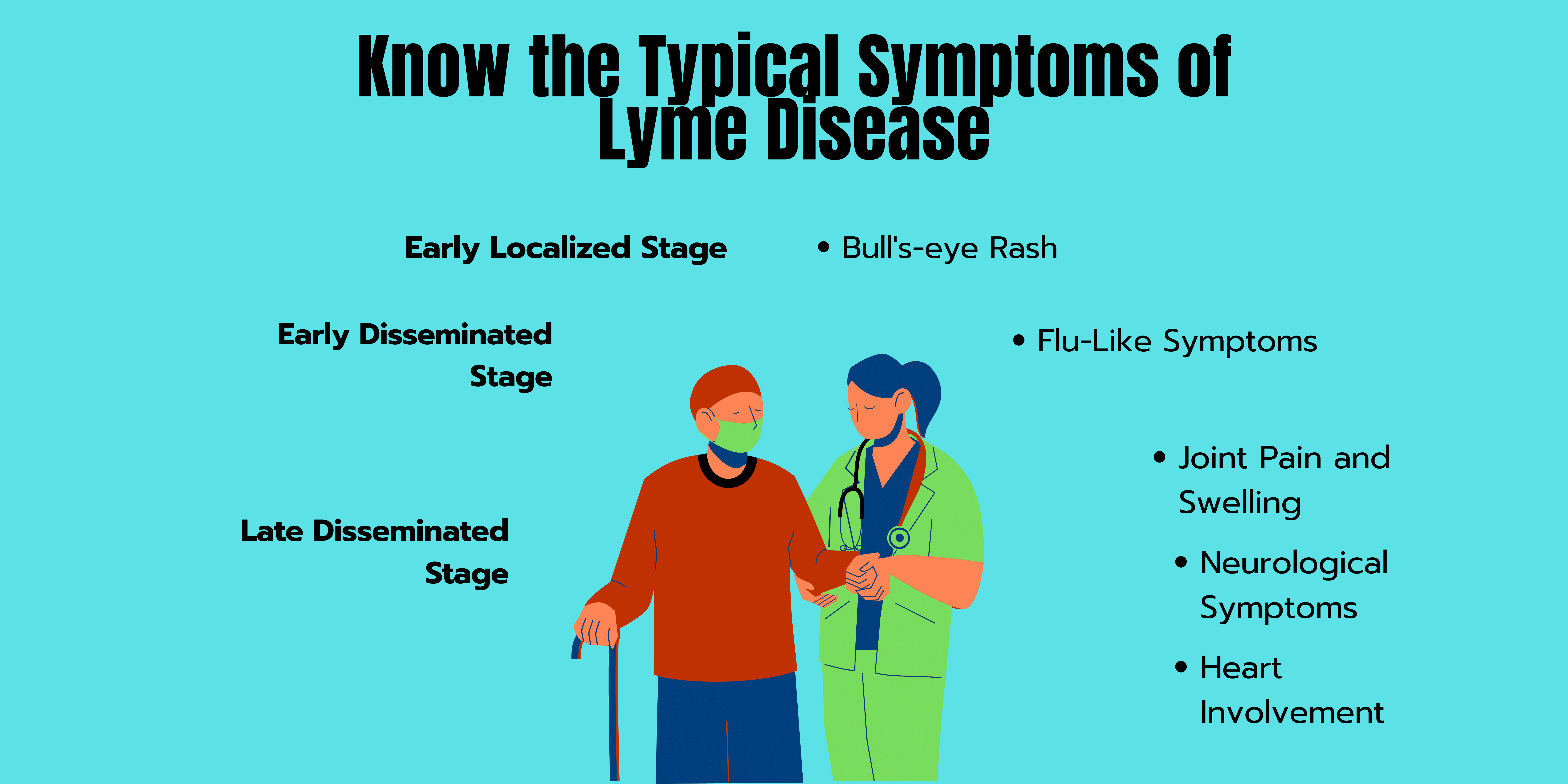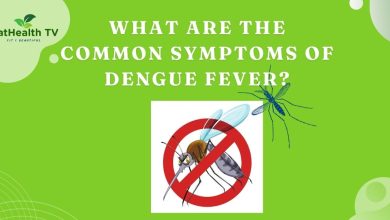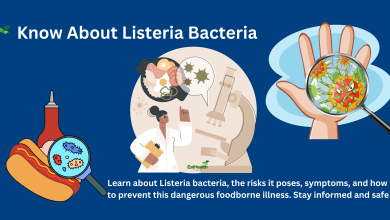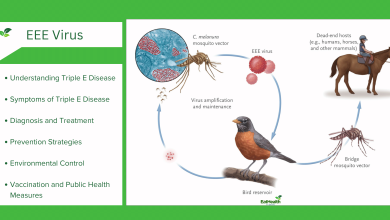Know the Typical Symptoms of Lyme Disease
Recognizing Early Detection and Awareness
Certainly, knowing the typical symptoms of Lyme disease is important for early detection and proper treatment. Lyme disease is caused by the bacterium Borrelia burgdorferi and is primarily transmitted through the bite of infected black-legged ticks. Symptoms can vary and often occur in stages. These are some of the usual Lyme disease symptoms:

1. Early Localized Stage:
Bull’s-eye Rash (Erythema migrans): One of the hallmark symptoms, a circular or oval-shaped rash with a central clearing that resembles a bull’s-eye. It usually appears within 3 to 30 days after a tick bite.
2. Early Disseminated Stage:
Flu-Like Symptoms: Flu-like symptoms, chills, exhaustion, headache, aches in the muscles and joints, and enlarged lymph nodes.
Multiple Erythema Migrans Rashes: Some individuals may develop multiple smaller rashes in various areas of the body.
3. Late Disseminated Stage:
Joint Pain and Swelling: Especially in large joints like the knees, which can become persistent and recurrent.
Neurological Symptoms: Tingling, numbness, shooting pains, or weakness in the limbs. In severe cases, this may lead to facial palsy or meningitis.
Heart Involvement: Heart palpitations, irregular heartbeat (Lyme carditis), and other heart-related symptoms.
It’s important to note that not all individuals with Lyme disease will experience the bull’s-eye rash, and symptoms can be nonspecific and similar to other illnesses. Early detection and treatment are crucial to prevent the disease from progressing to more severe stages.
If you suspect you have been exposed to ticks and are experiencing symptoms consistent with Lyme disease, it’s important to consult a healthcare professional. Lyme disease can be diagnosed based on clinical symptoms, history of exposure to ticks, and in some cases, blood tests to detect antibodies against the bacterium.
Keep in mind that Lyme disease is most common in regions where black-legged ticks are prevalent, such as wooded and grassy areas in North America and Europe. If you’re in an area where Lyme disease is prevalent and experience symptoms, seek medical attention promptly.




